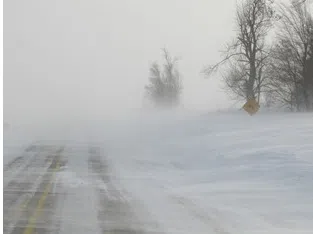(Des Moines) Wintertime poses a wide range of threats to the American public. Whether it be exposure to the cold, vehicle accidents caused by slick roads, or fires resulting from the improper use of heaters, hundreds of people are injured or killed each year as a direct result of winter weather.
Winter storms range from moderate snow over a few hours to a massive blizzard with blinding, wind-driven snow that lasts for several days. Some are large enough to affect several states, while others affect only a single community.
High winds, freezing rain or sleet, heavy snowfall, and dangerously cold temperatures are the main hazards of winter storms. Impassable snow drifts often maroon people at home without utilities or other services for days after an event. Heavy snowfall and blizzards easily trap motorists in their vehicles and make walking to find help a deadly effort. Severely cold temperatures and wind chills during and after a winter storm can lead to hypothermia and kill anyone caught outside for too long. The aftermath of a winter storm can impact a community or region for days, weeks, or even months, incurring steep economic costs.
Terms to Know:
- Snow Squalls are intense but limited-duration periods of moderate to heavy snowfall accompanied by gusty surface winds, which result in reduced visibilities and whiteout conditions. Rapidly falling temperatures in conjunction with the snow can cause dangerous impacts on surface transportation.
- Blizzard: Blowing and falling snow with winds of at least 35 mph, reducing visibilities to a quarter of a mile or less for at least three hours. A ground blizzard is called wind, lofting the current snowpack and reducing visibilities without falling snow.
- Freezing Rain is caused by rain falling on surfaces with a temperature below freezing. The rain freezes upon contact with the ground, forming large build-ups of ice that can down trees, power lines, and roads.
- Sleet: Rain/melted snow that has begun refreezing when it reaches the ground. Sleet tends to be softer than hail and is easily compacted. Sleet can make roads slippery very quickly.
- Wind Chill: The body’s apparent temperature when wind is factored into the equation.
Click HERE for additional winter weather preparedness information.
(Photo: Courtesy of the National Weather Service in Des Moines)













